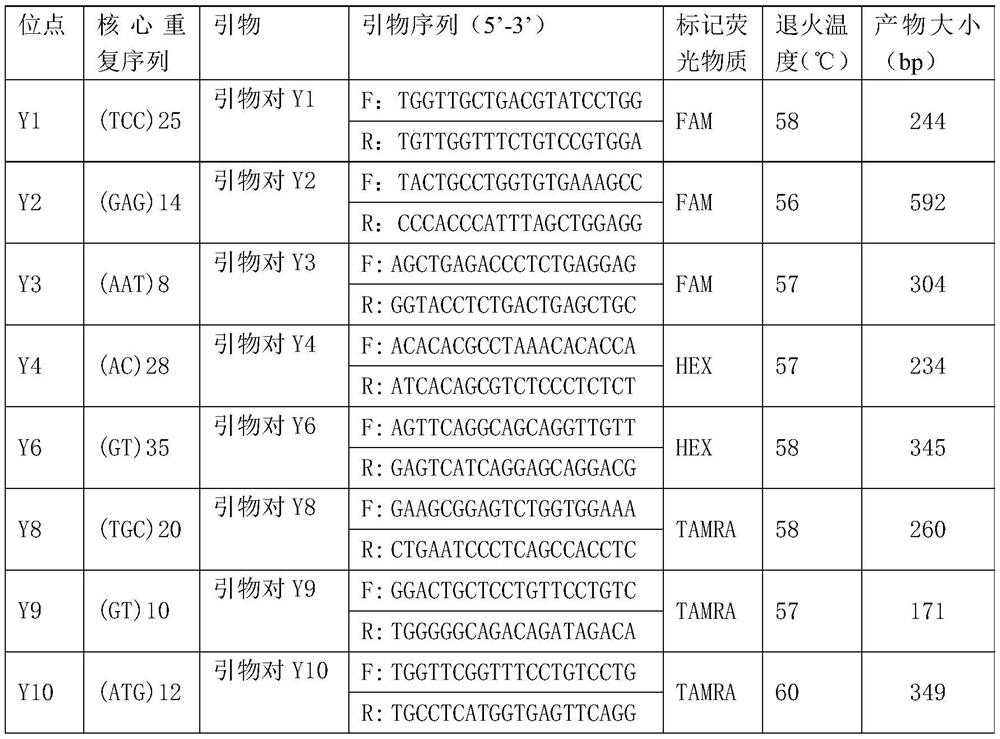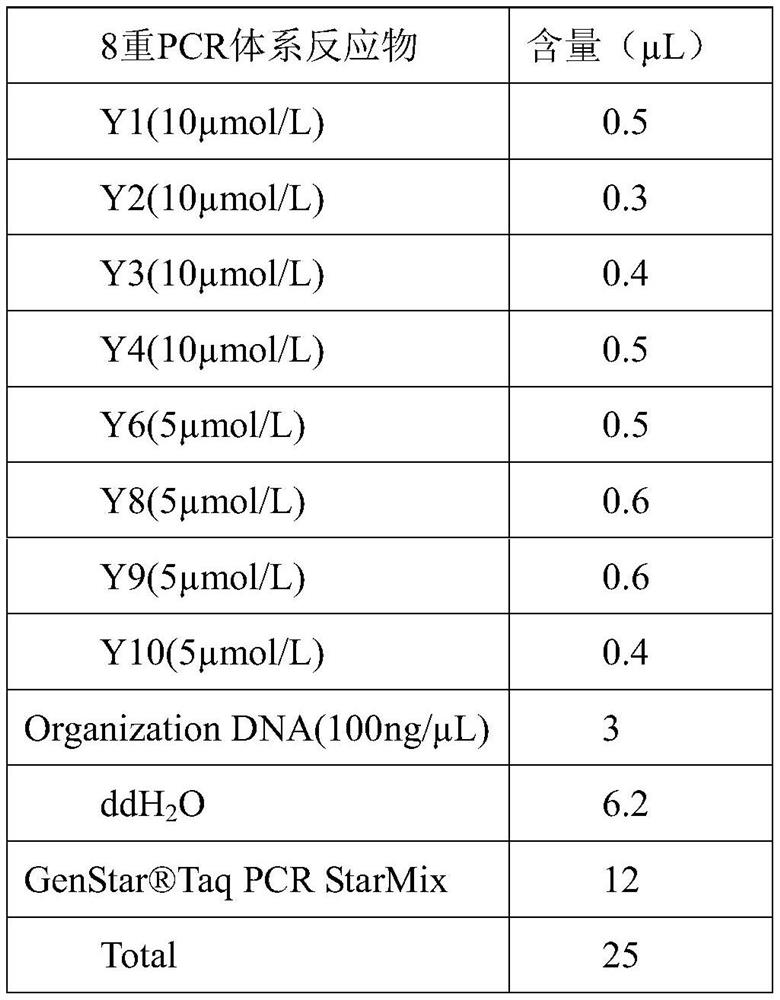Method for identifying sparus latus microsatellite family and application
A yellowfin seabream and microsatellite technology, applied in biochemical equipment and methods, microbial measurement/inspection, climate change adaptation, etc., can solve problems such as complex marking of all families, damage to growing larvae, and estimation deviation of genetic parameters, and achieve Water saving and manual management, efficiency improvement, high polymorphism effect
- Summary
- Abstract
- Description
- Claims
- Application Information
AI Technical Summary
Problems solved by technology
Method used
Image
Examples
Embodiment 1
[0037] The method for identification of the yellowfin seabream microsatellite family provided by the present embodiment comprises the following steps:
[0038] (1) Establishment of the Yellowfin Seabream Family
[0039] From Yangjiang and Daya Bay, 10 male and 10 male yellowfin seabream parents were collected, and artificially induced to breed. The ratio of male and female was 1:1, and 10 full-sib families were established. The fin ray tissue of each family parent was cut and placed in absolute ethanol, and the family information was recorded, and stored at -20 °C for future use. 10 families were cultured separately in a circulating water system. After 45 days of fry hatching, 10 fish were randomly selected from each family and fixed with absolute ethanol as samples for family identification.
[0040] (2) Genomic DNA extraction of the parent and progeny of yellowfin seabream;
[0041]The fin ray tissues of parental and progeny were placed in 2 mL centrifuge tubes, cut into p...
PUM
 Login to View More
Login to View More Abstract
Description
Claims
Application Information
 Login to View More
Login to View More - R&D
- Intellectual Property
- Life Sciences
- Materials
- Tech Scout
- Unparalleled Data Quality
- Higher Quality Content
- 60% Fewer Hallucinations
Browse by: Latest US Patents, China's latest patents, Technical Efficacy Thesaurus, Application Domain, Technology Topic, Popular Technical Reports.
© 2025 PatSnap. All rights reserved.Legal|Privacy policy|Modern Slavery Act Transparency Statement|Sitemap|About US| Contact US: help@patsnap.com


